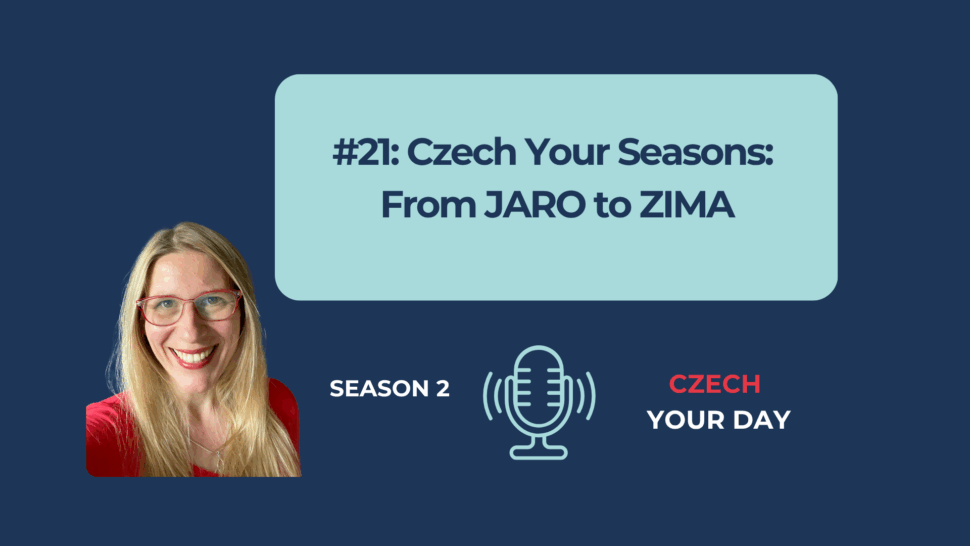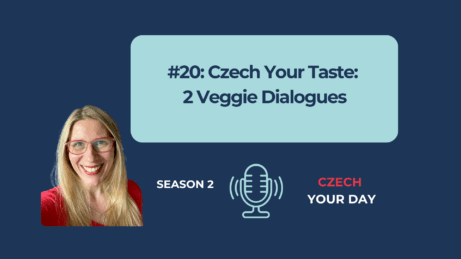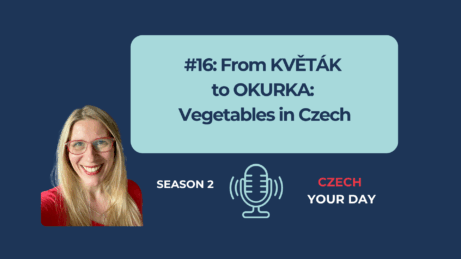Seasons of the Year in Czech: From JARO to ZIMA (S02/E21 – daily podcast CZECH YOUR DAY)

THIS WEEK’S TOPIC: ROČNÍ OBDOBÍ/SEASONS OF THE YEAR
THE TRANSCRIPT/HANDOUT IS DOWN BELOW
Discovering Czech Seasons: A Journey Through the Year
Jaro (Spring)
Podle meteorologického kalendáře jaro začíná v březnu a končí v květnu.
(According to the meteorological calendar, spring begins in March and ends in May.)
Jarní měsíce jsou březen, duben a květen.
(The spring months are March, April, and May.)
Mám moc ráda jaro, protože kvetou stromy a květiny.
(I love spring because the trees and flowers are in full bloom.)
Ok, we hardly ever say the word květiny. You will find that in textbooks – safe the word KVĚTINY for the exams or really formal situations. We say kytky, so:
Protože kvetou stromy a kytky.
(Because the trees and flowers are blooming.)
A všude je zelená tráva.
(And everywhere is green grass.)
Léto (Summer)
Podle meteorologického kalendáře léto začíná v červnu a končí v srpnu.
(According to the meteorological calendar, summer starts in June and concludes in August.)
Letní měsíce jsou červen, červenec a srpen.
(The summer months include June, July, and August.)
V létě je hodně horko.
(In the summer, it can get very hot.)
A také jsou někdy v létě letní bouřky.
(And sometimes there are summer storms.)
V létě jím často melouny.
(In the summer, I often eat watermelons.)
Podzim (Autumn)
Podle meteorologického kalendáře podzim začíná v září a končí v listopadu.
(According to the meteorological calendar, autumn begins in September and wraps up in November.)
Podzimní měsíce jsou září, říjen a listopad.
(The autumn months are September, October, and November.)
Mám moc ráda podzim, protože je krásně barevný.
(I adore autumn because of its splendid colors.)
Listí je červené, oranžové a žluté.
(The leaves are red, orange, and yellow.)
Zima (Winter)
Podle meteorologického kalendáře zima začíná v prosinci a končí v únoru.
(According to the meteorological calendar, winter officially kicks off in December and ends in February.)
Zimní měsíce jsou prosinec, leden a únor.
(The winter months are December, January, and February.)
V zimě jsou krátké dny.
(In winter, the days are short.)
Je velká zima.
(It’s very cold.)
Často mrzne a padá sníh.
(It often freezes and snows.)
V zimě piju často zázvorový nebo mátový čaj s medem.
(In winter, I often drink ginger or mint tea with honey.)









